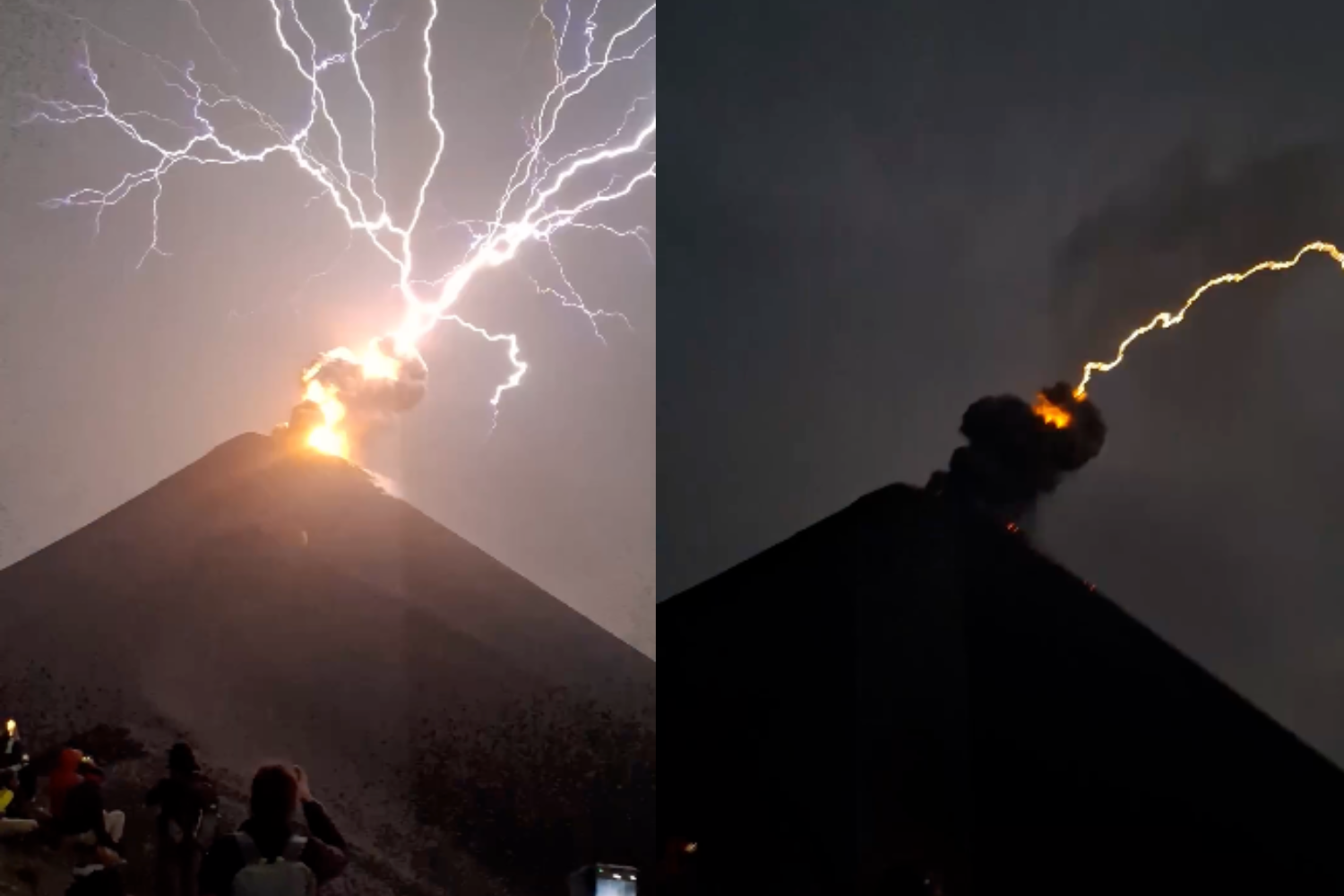Lightning Dazzles Onlookers Watching the Eruption of Volcan de Fuego in Guatemala [View all]
Volcanic lightning is so common that it’s even earned its own nickname: dirty thunderstorms
Sarah Kuta
Daily Correspondent
May 15, 2024 2:08 p.m.

Lightning wowed onlookers watching the eruption of Volcán de Fuego in Guatemala last month. Johan Wolterink / Instagram
Observers watching the eruption of Volcán de Fuego in Guatemala last month were treated to an unexpectedly dazzling show when lightning appeared to strike the active volcano. Videos of the scene have been making the rounds online this week, including one posted with the caption: “What are the odds?”
As it turns out, the odds are pretty good. Any erupting volcano has the potential to produce its own lightning, thanks to the principles of physics.
When volcanoes erupt, they spew gasses, lava, rocks and ash into the air. The ash particles collide with each other and generate static electricity, which can produce lightning.
As the ash particles rub up against one another, their atoms shed or pick up electrons, which creates positively and negatively charged areas of the ash plume, according to the Center for the Study of Active Volcanoes at the University of Hawaiʻi at Hilo. The atoms want to maintain a neutral charge, so the excess electrons in the negatively charged part of the plume “jump” across to the positively charged area. This temporarily restores the balance—and produces lightning in the process.
The same thing—known as charge separation—occurs during thunderstorms, only with water and ice particles instead of ash.
More:
https://www.smithsonianmag.com/smart-news/lightning-dazzles-onlookers-watching-the-eruption-of-volcan-de-fuego-in-guatemala-180984367/
